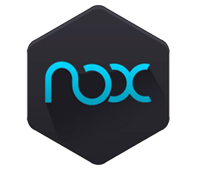FROM HERE
Download all
Android Emulators
Android Emulators on pc have gained great popularity in previous years with the spread of battle royale games such as pubg mobile, free fire, call of duty mobile, pokemon, and many battle royale games dedicated to the Android system.
Most emulators work on the Windows operating system, with its versions Windows 10, Windows 11, and other versions. There are also emulators online, which are online simulators on the cloud that do not need specific computer specifications

Android Emulator for pc
emulators provide you with running Android mobile games and applications on your computer Which works under the Windows system, and emulators on pc enable you to control and play games and applications using the keyboard and mouse. There are also android emulators mac, dedicated versions of emulators that run on Apple’s Mac system, such as Nox Player and BlueStacks emulator.
Android Emulators Online
Like there are emulators that run on Windows and emulators that run on Mac, there are also some emulators that run online on the cloud on any operating system.
Android system on PC
Android operating systems, there are many operating systems that use the Android system. You can install the system and run it on your computer easily. The system also enables you to run Android applications and games on the computer, and you can play games and control them through the computer.
Mirror&control Android Screen With PC
Control the Android mobile through a connection to the computer, play mobile games through the computer using the mouse, keyboard and the big screen, famous games such as PUBG Mobile, Free Fire, Call of Duty Mobile, and many other games and applications.

Through emulators, you can run Android apps and games on your computer
Common Questions
Android emulators are software programs that allow users to run Android applications and games on their computer or laptop. They create a virtual Android device on the computer, simulating the behavior and functionality of a real Android smartphone or tablet. This enables users to test and debug their Android apps, as well as play Android games, without needing to use an actual Android device. Emulators provide a way for developers to develop and modify Android apps, and for users to enjoy Android apps and games on larger screens with the convenience of a keyboard and mouse.
There are several advantages of using Android emulators:
1. Testing: Android emulators allow developers to test their applications on different devices without the need for physical hardware. This helps in identifying bugs and ensuring compatibility across various Android versions and screen sizes.
2. App Development: Android emulators provide developers with a virtual platform to build and test applications. This saves time and resources as they can avoid the need for multiple physical devices.
3. Accessibility: Emulators provide accessibility to people who do not have an Android device. They can easily experience and use Android applications on their desktop or laptop computers.
4. Support for Keyboard and Mouse: Android emulators enable users to utilize their keyboard and mouse for better control and ease of usage, which can be helpful for gaming or productivity applications.
5. Multiple Instances: Emulators allow users to create multiple instances, meaning that they can use different versions of Android or run multiple applications simultaneously.
6. Screen Recording: Emulators often have built-in screen recording features, making it easier for users and developers to record their screen activities for tutorials or demonstrations.
7. Resource Management: Emulators allow users to configure the hardware specifications of the virtual device, such as processor, memory, and storage. This ability to allocate resources gives users more control over the performance and capabilities of the emulated device.
8. Easy Installation of APKs: Emulators support the installation of APK files, which makes it convenient for users to test and install applications.
9. Convenience: Emulators provide convenience as users can access Android applications on their desktop or laptop computers, eliminating the need to switch between devices.
10. Availability of Additional Features: Emulators often come with additional features like GPS simulation, camera simulation, and network simulation. These features are helpful for testing location-based services, camera functionality, and network-dependent applications.
1. Bluestacks: Bluestacks is one of the most popular Android emulators available for Windows and Mac. It offers a smooth and lag-free experience, with support for keyboard and mouse controls.
2. NoxPlayer: NoxPlayer is another popular Android emulator known for its compatibility and customization options. It provides a user-friendly interface, allowing for easy installation and running of Android apps on PC.
3. MEmu Play: MEmu Play is a fast and reliable Android emulator suitable for gaming purposes. It offers a rich gaming experience with support for gamepad, keyboard, and mouse controls.
4. LDPlayer: LDPlayer is specifically designed for gaming and provides excellent performance for resource-intensive games. It supports virtualization technology, allowing users to play high-performance Android games on their PCs.
5. Genymotion: Genymotion is aimed at developers and offers a wide range of virtual devices and tools for testing and developing Android applications. It supports advanced features like hardware acceleration and OpenGL.
6. Andyroid: Andyroid is a feature-rich Android emulator that offers seamless synchronization between mobile and desktop devices. It supports multitouch gestures and allows users to run their favorite Android apps on a PC.
7. KoPlayer: KoPlayer is primarily focused on gaming and provides an optimized gaming experience with keymapping and gamepad support. It also offers screen recording and GIF creation features.
8. Remix OS Player: Remix OS Player is based on Android Marshmallow and provides a desktop-like experience. It is compatible with both Windows and macOS and supports multitasking and file sharing between the Android emulator and the host system.
9. PrimeOS: PrimeOS is not just an Android emulator but a full-fledged operating system based on Android-x86. It can be installed on PCs and can run Android apps and games with a customized desktop interface.
10. Android Studio Emulator: Android Studio Emulator comes bundled with the Android Studio IDE and is mainly targeted towards developers. It provides a virtual Android device for testing and developing applications.
These are some of the most popular Android emulators available in the market, each with its own unique features and advantages. It is recommended to try out a few of them to find the one that best suits your needs.
1. Download an Android emulator: There are several popular Android emulators available, such as Bluestacks, NoxPlayer, and Genymotion. Choose one and And go to his page to download the emulator installer.
2. Run the installer: Once the installer is downloaded, open it and run the installation process. Follow the on-screen instructions to complete the installation.
3. Configure the emulator: After the installation is complete, the emulator will open. You may need to sign in to your Google account or create a new one to use the emulator.
4. Customize emulator settings: Most emulators allow you to customize various settings, such as screen resolution, performance mode, and virtual device configurations. Explore the settings and make adjustments as per your preferences and requirements.
5. Install apps on the emulator: You can install apps on the emulator either by downloading them from the Google Play Store or by sideloading APK files. To download apps from the Play Store, open the Play Store app on the emulator and sign in with your Google account. To sideload APK files, simply drag and drop the APK file onto the emulator window.
6. Use the emulator: Once the apps are installed, you can use the emulator just like how you would use an Android device. Launch the installed apps, explore their features, and test functionalities.
Remember, while an Android emulator allows you to experience Android on your computer, it may not provide the exact performance and behavior as a physical Android device.
Android emulators are virtual software programs that allow users to run Android applications and games on their computers. While they can be a useful tool, they can also encounter various issues that can hinder their functionality. Here are some common problems with Android emulators and troubleshooting steps to resolve them.
1. Emulator Not Starting or Loading:
– Ensure that your computer meets the minimum requirements for running the emulator.
– Update your graphics card drivers to the latest version.
– Restart your computer and try running the emulator again.
– Uninstall and reinstall the emulator to fix any corrupted files.
2. Emulator Running Slow:
– Allocate more RAM and CPU resources to the emulator by adjusting its settings.
– Close any unnecessary applications running in the background.
– Update your graphics card drivers to the latest version.
– Decrease the resolution of the emulator and disable any unnecessary graphical settings.
3. App Installation Issues:
– Make sure that the emulator is connected to the internet.
– Clear the cache of the Google Play Store and Google Play Services within the emulator settings.
– Try downloading the app APK file separately and install it manually on the emulator.
4. Emulator Keyboard Not Working:
– Restart the emulator and try using the keyboard again.
– Check if the keyboard input is enabled within the emulator settings.
– Update or reinstall the emulator to address any compatibility issues.
5. Emulator Not Connecting to the Internet:
– Ensure that your computer has an active internet connection.
– Disable any VPN or proxy settings that might be interfering with the emulator’s network connection.
– Restart the emulator and try connecting to the internet again.
6. Emulator Crashing or Freezing:
– Update your graphics card drivers to the latest version.
– Allocate more RAM and CPU resources to the emulator.
– Disable any conflicting software or antivirus programs.
– Reinstall the emulator to fix any corrupted files.
7. Emulator Display Issues:
– Update your graphics card drivers to the latest version.
– Adjust the screen resolution and DPI settings within the emulator settings.
– Enable hardware acceleration in the emulator settings.
– Try using a different emulator software to see if the issue persists.
If none of these troubleshooting steps resolve the issue, you may need to seek assistance from the emulator’s support forums or the software developer.
There are several best practices for optimizing performance in Android emulators:
1. Use the latest emulator version: Make sure you are using the latest version of the Android emulator, as newer versions often include performance improvements and bug fixes.
2. Use hardware acceleration: Enable hardware acceleration, such as Intel HAXM (Hardware Accelerated Execution Manager) or AMD Virtualization, if your computer supports it. Hardware acceleration can significantly improve the performance of the emulator.
3. Use a dedicated GPU: If possible, use a computer with a dedicated GPU (Graphics Processing Unit) instead of relying on integrated graphics. A dedicated GPU can provide better performance for graphics-intensive applications.
4. Allocate more resources to the emulator: Increase the RAM and CPU resources allocated to the emulator. You can adjust these settings in the AVD (Android Virtual Device) Manager.
5. Use a fast storage device: If you are using an emulator image stored on your computer’s hard drive, consider using a solid-state drive (SSD) for better performance. SSDs are faster in reading and writing data, which can help improve the emulator’s performance.
6. Disable unnecessary features: Disable unnecessary hardware features or settings in the emulator, such as GPS, Bluetooth, and NFC, if they are not needed for your testing purposes. This can help reduce the load on the emulator and improve performance.
7. Optimize your app: Optimize your app code and resources to ensure efficient performance on the emulator. Use tools like Android Profiler to identify performance bottlenecks, such as CPU or memory usage, and optimize accordingly.
8. Use snapshots: Take advantage of the emulator’s snapshot feature, which allows you to save and load the emulator state quickly. Snapshots can speed up the emulator startup time, especially if you frequently need to start and stop the emulator during development.
9. Emulate lower-end devices: If your app targets a wide range of devices, consider testing on lower-end emulated devices. Emulating a lower-end device can highlight performance issues that may not be apparent on high-end emulators or physical devices.
10. Use host GPU: Enable the “Use Host GPU” option in the AVD Manager settings. This option leverages the host machine’s GPU for rendering, resulting in improved graphics performance.
By following these best practices, you can optimize the performance of your Android emulator and create a smoother testing and development experience.
To run Android apps on PC using emulators, follow these steps:
1. Download and install an Android emulator on your PC. Some popular options include Bluestacks, Nox Player, and Smart Gaga.
2. Launch the emulator and complete the initial setup process. This usually involves signing in with your Google account.
3. Open the Google Play Store within the emulator and search for the app you want to run on your PC. Install the app as you would on an Android device.
4. Once the app is installed, you can launch it from the emulator’s home screen or app drawer.
5. Use the mouse and keyboard on your PC to interact with the app. The emulator should provide options to simulate touch gestures if needed.
6. To install an app from an APK file (not available on the Play Store), download the APK file and open it in the emulator. The emulator should automatically install the app.
Note: Some emulators may be resource-intensive and require a powerful PC to run smoothly. Make sure your PC meets the system requirements of the emulator you choose.
That’s it! You can now enjoy Android apps on your PC using an emulator.
When it comes to choosing an Android emulator, several options are available, and finding the right one depends on your specific needs and preferences. Here, we will compare some popular Android emulators to help you make an informed decision:
1. BlueStacks: BlueStacks is one of the most well-known Android emulators, offering a user-friendly interface and easy setup. It provides excellent gaming performance and supports a wide range of apps. BlueStacks also offers features like multiple instances and key mapping.
2. NoxPlayer: NoxPlayer is another popular emulator, especially for gamers. It provides features like keyboard mapping, gamepad support, and macro recording. NoxPlayer offers smooth running of resource-intensive games and supports both Intel and AMD processors.
3. MEmu Play: MEmu Play is an emulator that focuses on gaming performance. It supports high FPS, provides customizable controls, and allows mapping of gestures. MEmu Play also supports multiple instances and is compatible with both Intel and AMD processors.
4. Genymotion: Genymotion is more geared towards developers, providing advanced features like device emulation, network simulation, and automation. It offers a wide range of virtual devices and allows for seamless integration with Android Studio.
5. LDPlayer: LDPlayer is known for its gaming capabilities and offers features like keyboard mapping, gamepad support, and multi-instance. It supports various Android versions and provides a smooth gaming experience.
When choosing an Android emulator, consider factors such as performance, compatibility with your PC’s hardware, ease of use, features, and whether you need it more for gaming or development purposes. Additionally, check system requirements and user reviews to make the right choice for your specific needs.
As technology continues to advance, the future of Android emulators looks promising. Here are some potential insights into what the future holds for these emulators:
1. Improved Performance: One key area of development for Android emulators will be improving their performance. Emulators are often known to be resource-intensive, requiring powerful hardware to run smoothly. However, with advancements in hardware technology, future emulators may be able to utilize more of the computer’s processing power, resulting in improved performance and reduced lag.
2. Seamless Integration with Mobile Devices: In the future, we can expect Android emulators to have enhanced integration with mobile devices. This could include features like syncing notifications, messages, and app data between the emulator and the user’s mobile device. This seamless integration would allow users to easily switch between using their physical device and the emulator without any disruptions.
3. Enhanced Gaming Capabilities: The gaming industry is one area where Android emulators have gained significant popularity. In the future, emulators may offer enhanced gaming capabilities, such as support for higher resolutions, advanced graphics settings, and compatibility with gaming peripherals. This would provide a more immersive gaming experience for users, attracting both casual and hardcore gamers to these emulators.
4. Cloud-Based Emulation: Another potential advancement is the emergence of cloud-based Android emulators. Instead of running the emulator locally on a user’s device, the emulation process can be done remotely on powerful servers. Users would be able to access the emulator through a web browser or dedicated application, eliminating the need for high-end hardware and providing a consistent experience across different devices.
5. Augmented Reality (AR) and Virtual Reality (VR) Support: AR and VR technologies are rapidly evolving, and it’s only a matter of time before Android emulators start incorporating these features. Future emulators could allow users to experience AR and VR apps and games directly through the emulator, simulating the real-world experience without the need for specialized hardware.
6. Privacy and Security Enhancements: With increasing concerns about data privacy and security, future Android emulators may focus on providing enhanced privacy features. This could include features like sandboxed environments for apps, secure data storage, and encrypted communication between the emulator and the user’s device. Emulator developers will likely prioritize user privacy to build trust and attract a wider user base.
Overall, the future of Android emulators seems promising, with advancements in hardware, software, and integration with emerging technologies. These emulators will likely continue to provide a valuable tool for developers, gamers, and users wanting to experience Android apps and games on different platforms.
Latest articles:






























